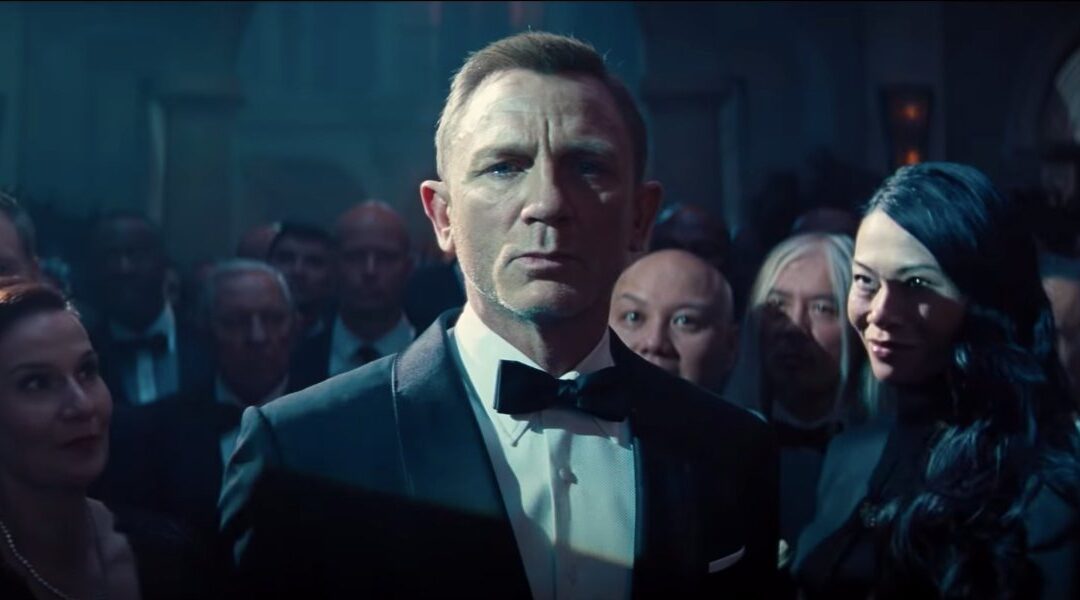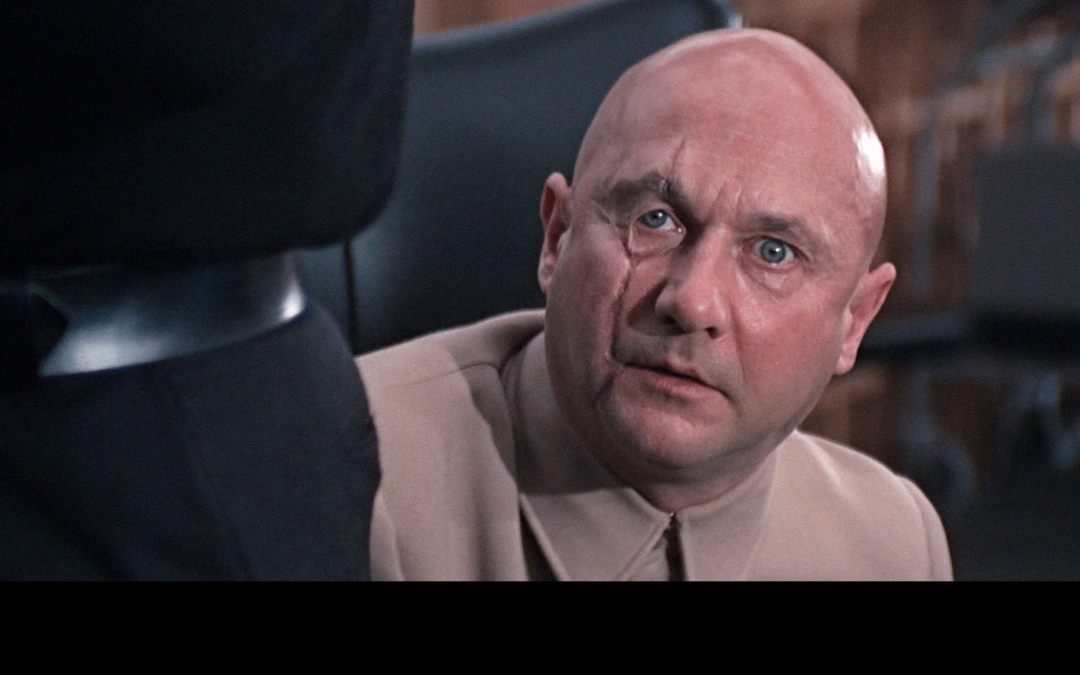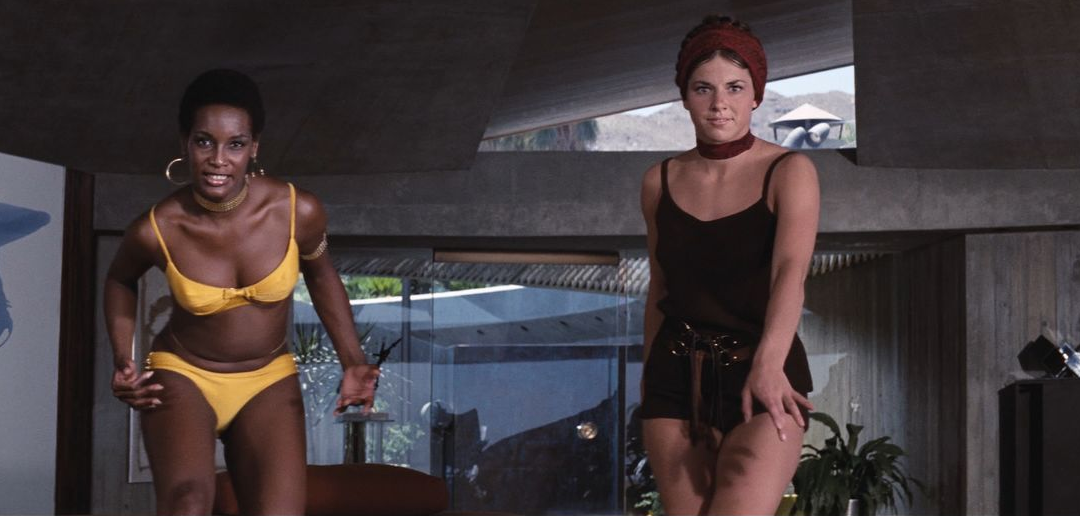
No Time To Die: The Conflict of Bond, Not Really Bond
Too many words have been spent on articles explaining that James Bond owes his longevity to a kind of blank-slate cross-gender appeal. He isn’t a three-dimensional human so much as a conduit. Men (and women!) want to be James Bond. Others want to watch someone look that good in a tuxedo or blue terrycloth jumper. In terms of the character’s psychological depth, we’d spent as much time ordering martinis at McDonalds as we did considering if James Bond had a Rosebud. No Time to Die, like its predecessor, provides the viewer with Ikea instructions and an Allen wrench in hopes you’ll piece together a Rosebud on your own.

A grizzled Daniel Craig recalls his aborted childhood, sledding down hills and frolicking in deep focus.
So, Who is James Bond Then?
He’s quick with a pun, drinks to excess (without visible inebriation), woos women with a raised eyebrow/steely glare/Cro-Magnon sex appeal, and dutifully serves Queen and country. He’s worn many different faces and demeanors, but his superficial characteristics and the series’ consistent stylistic choices have bridged gaps between actors and filmmaking eras. And every so often, Bond experiences or lingers on personal trauma.
Bond falls in love, gets married, and his wife, Tracy Bond (née di Vinenzo), dies in under 140 minutes in On Her Majesty’s Secret Service (1969). Bond visits Tracy’s grave in For Your Eyes Only (1981). If you’re feeling generous, you could even count the subtle overtures made about marriage in Licence to Kill (1989) and The World is Not Enough (1999). Bond never felt the burden of connectivity – even when it might have benefitted the storyline. For worse – but mostly better. Mistakes get swept under the rug or dropped down smokestacks, like terrible villains.

The extendtof Bond’s character development during the Moore years in one image. Moments later we’re dropping Blofeld down a smokestack before the title sequence rolls. Craig took almost six hours to do these very same things.
In most every movie, Bond received a mission, carried out that mission, and got the girl. Our interests lied not in whether he’d do all those things, but how. We went to the cinemas for pure escapism, unburdened by emotional baggage. We loved that structure. We loved how the Bond series played with routine.
Skyfall Suggested We Cared More About Subversion
During the Craig era, EON decided that we’d had enough fun and frolic and instead needed steamer trunks filled with ennui and disillusionment. No Time to Die perpetuates the same issues that plagued Spectre in 2015, which makes this whole conversation feel like a bad case of déjà vu. No Time to Die wants to be fun, but this character called “James Bond” can let go of his shiny new 21st-century past.
From the earliest scenes, a sense of mortality hangs around the picture’s neck like a noose. Bond takes Madeline on an Italian holiday as Hans Zimmer reimagines On Her Majesty’s Secret Service’s “All the Time in the World” – and Bond even shoehorns Lazenby’s famous final line into their idle drive-time conversation. Madeline encourages Bond to visit Vesper Lynd’s grave (shades of Bond visiting Tracy’s grave in FYEO). She wants him to put Vesper in the past so they can move forward.
No Time to Die Takes Plenty of Time to Mourn, Though
No Time to Die grounds itself in these opening moments as a spiritual descendant of OHMSS, a movie that ended with a moment of tragedy after two hours of fun adventures like skiing, curling, bobsledding, and safecracking while reading Playboy. No Time to Die wallows in moodiness for most of its 163 minutes. And that’s a problem Cary Joji Fukunaga and his screenwriting committee (Neal Purvis, Robert Wade, and Phoebe Waller-Bridge) can’t overcome with the relief of a few clever action sequences and quippy asides. They’ve worked a bad pun or two into this script, but they’re obligatory appeasements. I laughed because I was desperate for levity.
Around the scant humor, we’re besieged by speechifying like “James Bond. License to Kill. History of violence. I could be speaking to my own reflection. Only your skills die with your body. Mine will survive long after I’m gone.” James, Madeline, Safin, M, and even Blofeld take turns grabbing the spotlight to perform an off-Broadway performance of Death of a Salesman. Top it off with the usual Craig-era oratories from the top down about an ephemeral, amorphous, non-descript evil that can’t be hunted and killed like those olden days of espionage when you could look your adversary in the eye.
Except, inevitably, Bond does indeed meet the vaporous villain face to face and dispatches him. Just like the olden days. So let’s stop wasting time telling me about inescapable evil and instead work on actually establishing the evil.
So Aren’t We Still Playing the Game in No Time to Die?
Maybe. If we found time for pleasantries like golf, baccarat, idle drinking and just being James Bond. Bond was never found in action beats. The script delivers dozens of referential nods towards the past without delivering much of the stuff that defined the character in the first place.
I noted Dr. No, Thunderball, and On Her Majesty’s Secret Service imagery (among others) in the title sequence. The portrait for a pre-Craigers M, Robert Brown, conspicuously hangs on an MI-6 gallery wall. The use of “We Have all the Time in the World” in music and dialogue. An almost obligatory, eleventh-hour Q-branch gadget. Bond kicking the car down on Billy Magnussen’s double agent echoed Moore’s famous cold-blooded kill of Locque in For Your Eyes Only. A litany of book references for the hardcore Fleming-heads. The multi-movie connections and broad, villainous arcs, meanwhile, take their cues from the sprawling “everything is connected” branding of the Marvel universe.
No Time to Die dispenses with any attention to international spycraft, once again turning inward on Bond and his personal connections and misery. This makes for a competent Hollywood-crafted action serial, but a lackluster Bond film. Skyfall and No Time to Die suffer from these same afflictions. The latter’s worse off, however, because it’s saddled with the tentacles of Spectre’s facile cliffhangers.
But the Stories
At the end of No Time to Die, Madeline tells her daughter “I’m going to tell you a story about a man. His name was Bond. James Bond,” which is supposed to tug our heartstrings and put the “Bond. James Bond” introduction in the mouth of the (other) woman who loved him. This falls short of its intended emotional resonance.
This James Bond doesn’t really have stories. This James Bond retires more times than he’s reluctantly saved the world. He’s irresponsibly chased personal vendettas to the detriment of those around him and his country’s security. Courtesy of the multi-movie narrative arc – whereby QUANTUM was the little fish eaten by SPECTRE, and SPECTRE was the bigger fish eaten by some arb with a plant fetish. No Time to Die has, to recycle my old argument against SPECTRE, neutered the series’ Big Bad.
If we are to give Spectre even an unwarranted ounce of credit for establishing SPECTRE as a nefarious international criminal organization bent on world domination or some such megalomania, No Time to Die erases it. The Bond producers forced SPECTRE and Blofeld into Spectre, assuming the audience’s nostalgia would fill in the part about the organization being James Bond’s long-time nemesis without establishment. One movie later, Safin cleans house. No more Blofeld. No more SPECTRE. These aren’t supervillains—they’re merely roadkill that Bond further flattens with his Aston Martin on his way to retire again.
Overwrought super-seriousness aside, Cary Joji Fukunaga displays a good sense of how a Bond movie should look and feel. Tonal and scriptural issues aside, No Time to Die is a glossy, competent action film. If it didn’t have to deal with Spectre’s matzoh balls, it might have even been a great Bond movie.
Who Stopped No Time To Die Short?
No Time to Die’s shortcomings rest on the shoulders of the producers. The Bond team takes its cues from the top down. The burden lies with the creative decision makers who did not bring David Arnold back, who gave Sam Mendes two movies, who continued to employ Purvis and Wade as primary screenwriters despite the labored repetition of the rogue, retire, repeat cycle of the Craig era.
Hans Zimmer’s mediocre score, like the Newman scores for Skyfall and Spectre, once again resists (recoils against?) the use of the Bond theme in high-leverage sequences. Instead, Zimmer reserves the needle drop for Bond walking across the street into MI-6. I love idle-time swagger, but that can’t be your singular “James Bond” moment. Elsewhere, the score teases with Johnny-Marr-forward guitar, before abandoning the building momentum.

Martinis, Ana de Armas, competing MI6 and CIA operatives, remote-control eyeballs, and Zimmer doing David Arnold — the Cuba scenes in No Time to Die suggested the kind of movie we could have had.
When Zimmer embraces the Barry and Arnold traditions, the score rises from its slumber. The “Cuba Chase,” for example, which scores arguably the best individual scene in any of the Craig-era Bond films, contrasts Cuban strings and horns with heavy, brooding brass, perfectly setting the mood for the action on screen. No scene better represents the potential of a No Time to Die unburdened by the past. This was old Bond in a new era, a deliriously enjoyable blend of humor and action, propelled by new talent (Ana de Armas and Lashana Lynch) and mixed with Bond being Bond. 007 stumbles into a situation for which he wasn’t fully prepared and survives with a little luck, a little moxie, and a little help from his friends.
If the rest of No Time To Die had been half as concerned with creating this kind of energy and forward momentum, I’d have been more forgiving about its individual shortcomings. Instead, we’re left to wrestle with the internal conflict created by an overlong, semi-entertaining film that chose to conclude the Craig-era by nuking it all from orbit.
And after Spectre and No Time to Die, I’d be lying if I didn’t wholehearted support it. Ironically, it might be the only way to be sure that the real James Bond will actually return.



















